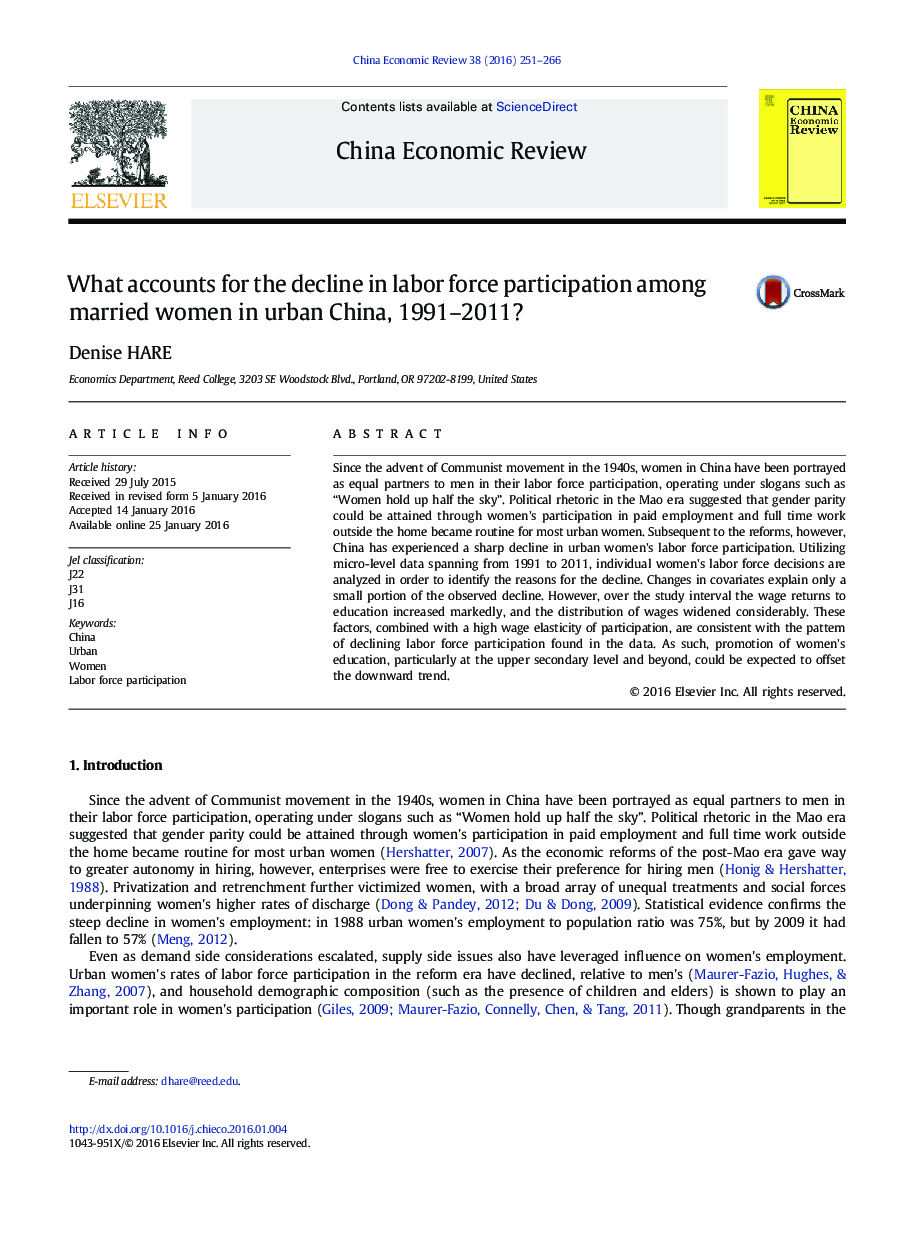| Article ID | Journal | Published Year | Pages | File Type |
|---|---|---|---|---|
| 5047334 | China Economic Review | 2016 | 16 Pages |
â¢Urban women's labor force participation has declined sharply in the post-reform era.â¢Meanwhile, returns to education have increased and the distribution of wages has widened.â¢Accounting for the participation decline, changes in covariates explain only a small portion.â¢A high wage elasticity of participation, coupled with the widening distribution of wages, offers a more promising explanation.
Since the advent of Communist movement in the 1940s, women in China have been portrayed as equal partners to men in their labor force participation, operating under slogans such as “Women hold up half the sky”. Political rhetoric in the Mao era suggested that gender parity could be attained through women's participation in paid employment and full time work outside the home became routine for most urban women. Subsequent to the reforms, however, China has experienced a sharp decline in urban women's labor force participation. Utilizing micro-level data spanning from 1991 to 2011, individual women's labor force decisions are analyzed in order to identify the reasons for the decline. Changes in covariates explain only a small portion of the observed decline. However, over the study interval the wage returns to education increased markedly, and the distribution of wages widened considerably. These factors, combined with a high wage elasticity of participation, are consistent with the pattern of declining labor force participation found in the data. As such, promotion of women's education, particularly at the upper secondary level and beyond, could be expected to offset the downward trend.
